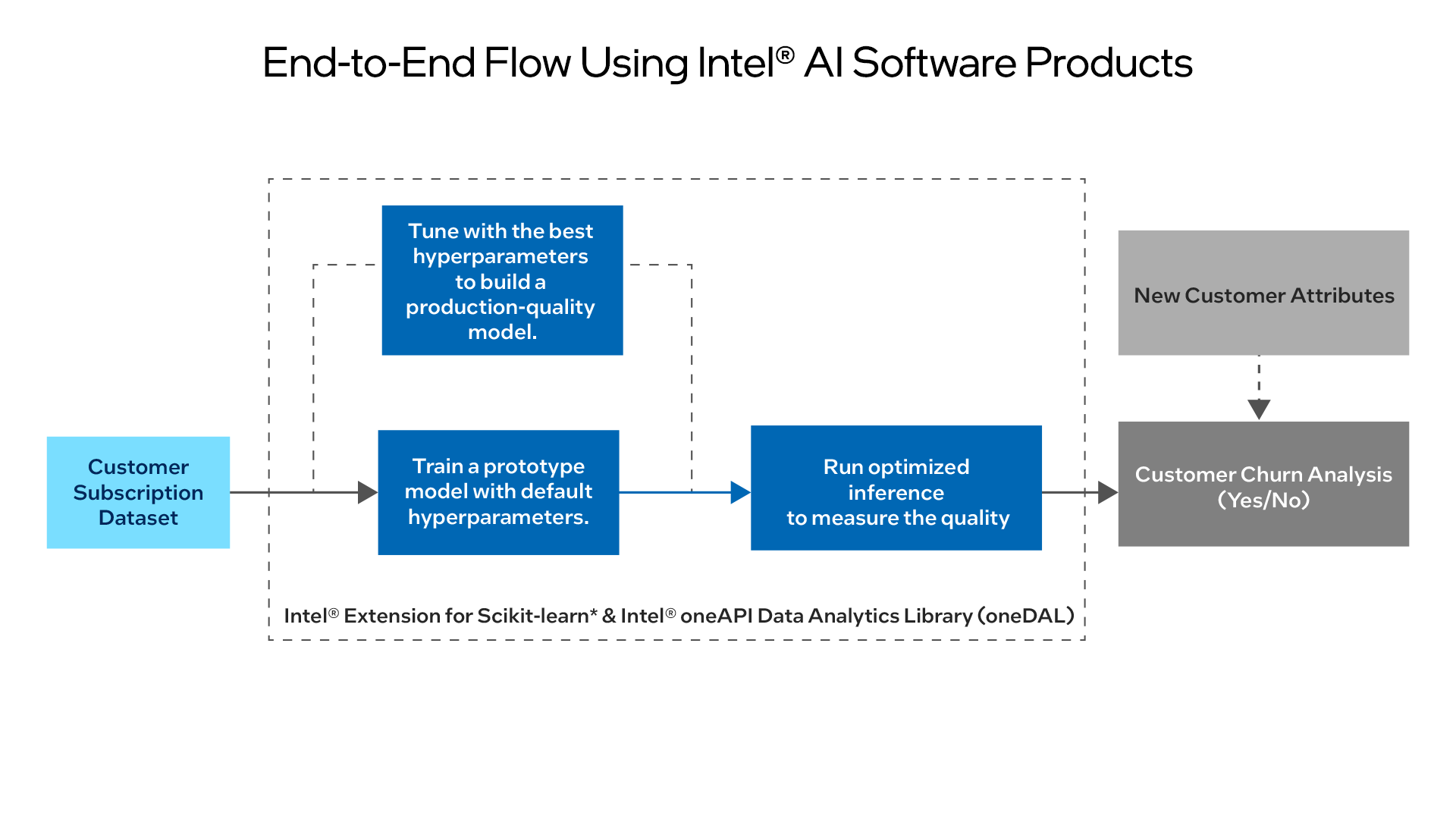Background
Losing customers can negatively impact a company’s bottom line. Churn rate is an important metric for telecommunications (telecom) providers to capture as it reflects the annual percentage rate of customers that stop subscribing to its service. It is estimated that one to two percent of customers leave the telecom network annually.1 A US telecom provider with 50 million users could experience up to 300 million dollars (USD) in lost revenue annually, assuming a one-percent annual churn rate. Furthermore, when a user leaves a network, they usually take with them an additional two to three users.1 Replacing these customers is necessary for recovery, but the customer acquisition cost (CAC) for a new customer is approximately five times that of retaining an existing customer.2
Churn rate is monitored by company investors as well. Communications service providers (CSPs) should look for early indicators of customer attrition. However, the amount of customer data to examine attrition can run into the petabytes, thus requiring considerable computational costs.
This reference kit demonstrates a reference implementation for predicting customer churn status, which can be part of an overall customer service improvement system. If a company knows which customers are at risk of leaving, proactive measures, such as targeted outreach and special offers, can be put in place. Customer support teams may also need to adapt their real-time interactions with customers who are likely to stop subscribing.
Solution
In collaboration with Accenture*, Intel developed a customer churn reference kit, which may assist your machine learning-based application to identify customers who are likely to leave your subscription-based service. This reference kit includes:
- Training data
- An open source, trained model
- Libraries
- User guides
- Intel® AI software products

At a Glance
- Industry: Telecommunications
- Task: Predict if a customer will unsubscribe and create churn or not (classification and regression)
- Dataset: Structured telecom internet subscriber data
- Type of Learning: Supervised learning
- Models: Logistic regression, random forest classification
- Output: Yes or No if customer churn is predicted
- Intel® AI Software Portfolio:
- Intel® AI Analytics Toolkit (AI Kit)
- Intel® Extension for Scikit-learn*
- Intel® oneAPI Data Analytics Library (oneDAL)
Business Results
Random Forest Classification
- Up to 91% faster training in batch
- Up to 69% faster hyperparameter tuning
- Up to 87% faster inference in real time
- Up to 91% faster inference in batch
Logistic Regression
- Up to 54% faster training in batch
- Up to 49% faster inference in real time
- Up to 12% faster inference in batch
For workloads and configurations, see GitHub*. Results may vary.
Technology
Optimized with Intel AI Software Products for Better Performance.
The customer churn model was trained using the Intel Extension for Scikit-learn. The Intel® oneAPI Data Analytics Library (oneDAL) was used as the underlying solver to optimize the inferencing of the model.
Performance benchmark tests were run on Microsoft Azure* Standard_D8_v5 using 3rd generation Intel® Xeon® processors to optimize the kit.
Benefits
Faster model training means more customer churn models can be built and trained. With the Intel AI Analytics Toolkit, little to no code changes are required to attain the performance boost. Faster inference time results in less compute time and fewer costs to produce customer churn models across a large customer base.
Customer experience solutions, such as those examining customer churn, typically are part of a larger solution framework that requires the assessment of customer traffic data, network performance, billing issues, customer complaints, and the escalation of issues. It requires considerable analysis of millions of rows of data, which can be very compute intensive. However, it is necessary to do this analysis so telecom customers have a better and more personalized experience, while allowing the provider to minimize the total cost of ownership (TCO) by retaining their existing customer base. Implementing machine learning models for customer churn, such as the ones in this AI reference kit, are a good starting point for understanding the overall customer experience.
References
- Verizon Communications Inc. 2021 Annual Report (2022). Retrieved from https://www.verizon.com/about/sites/default/files/2021-Annual-Report-on-Form-10-K.pdf
- Jackson, E., Big telecoms are spending more cash to keep customers, but some tactics raise concerns. (March 10, 2017). Financial Post. https://financialpost.com/technology/big-telecoms-are-spending-more-cash-to-keep-customers-but-some-tactics-raise-concerns

